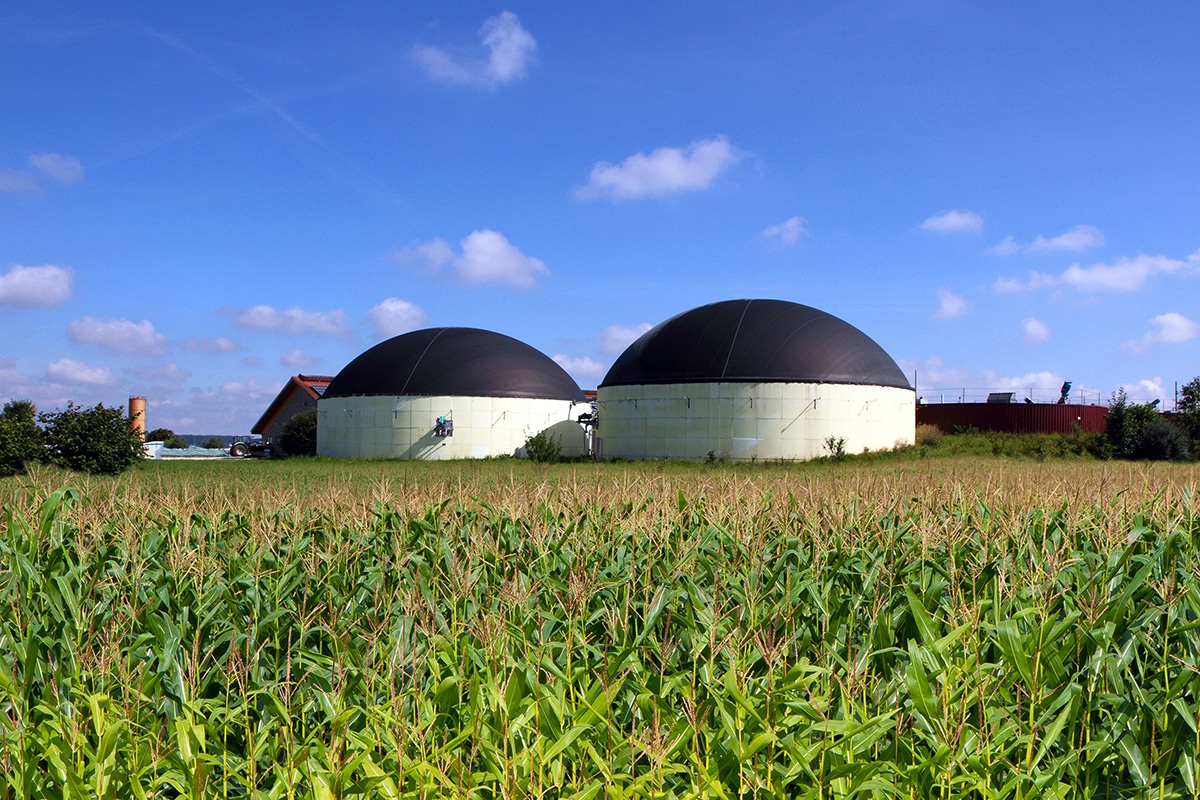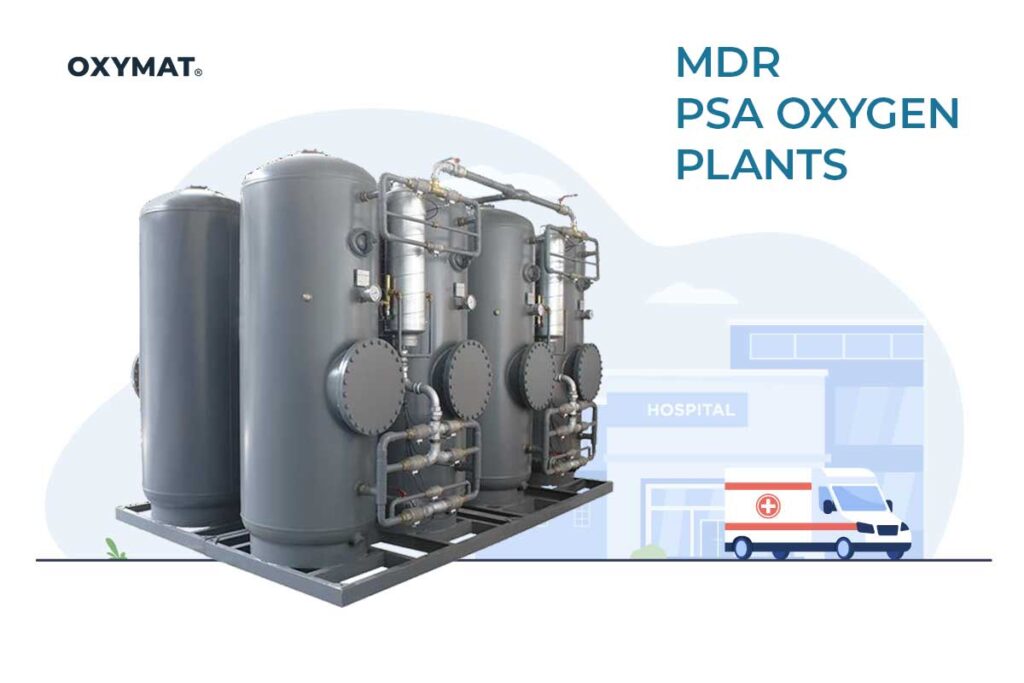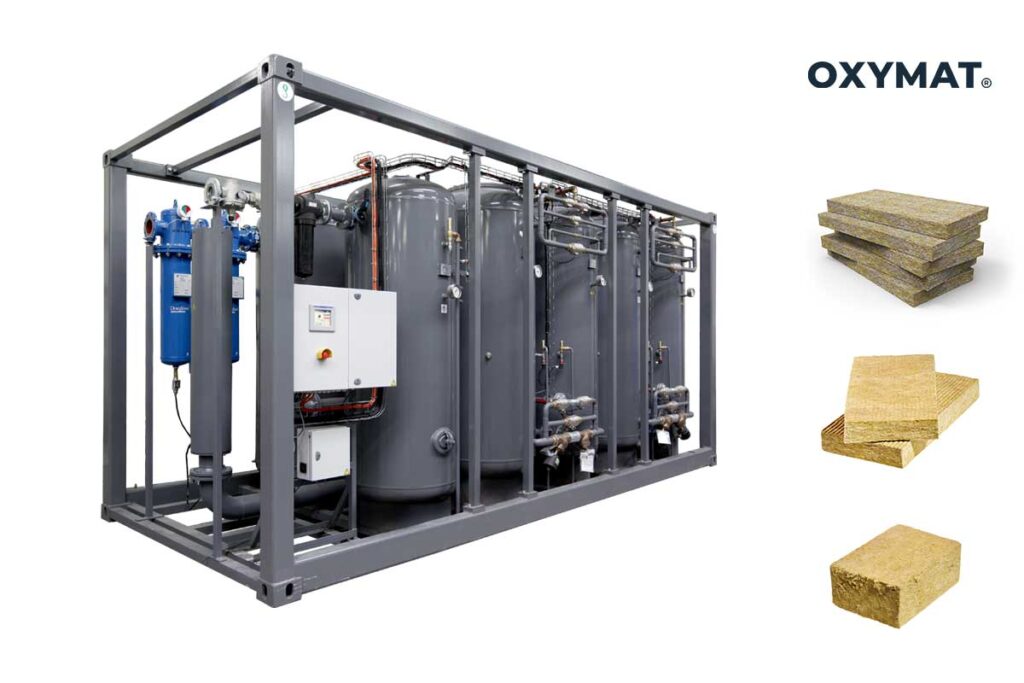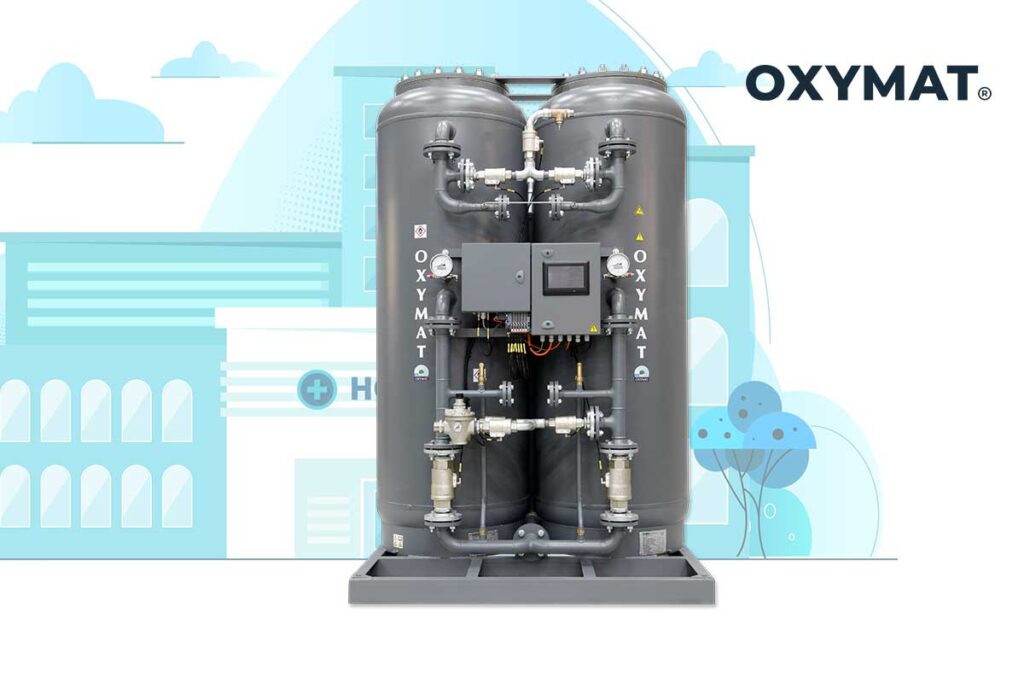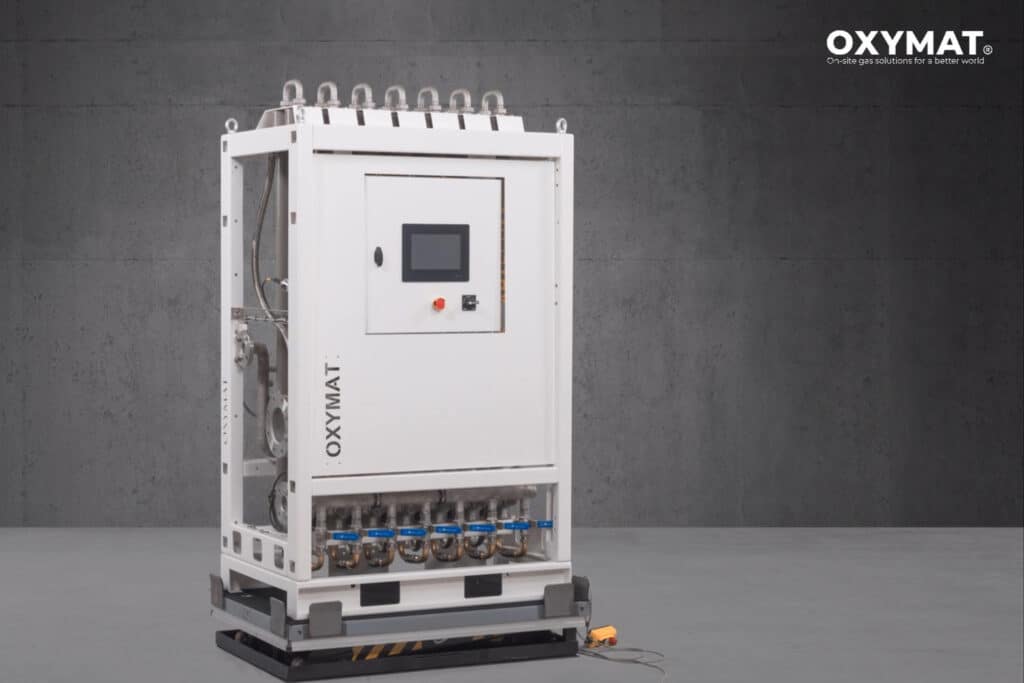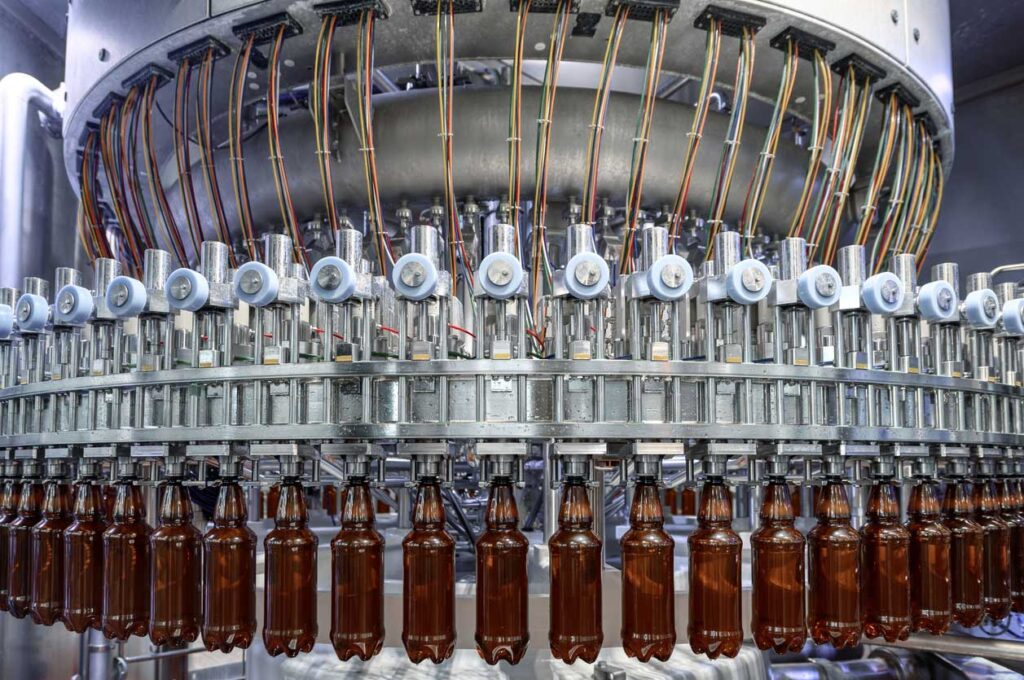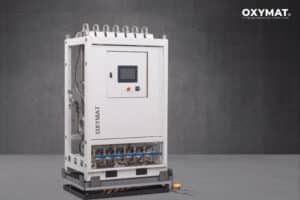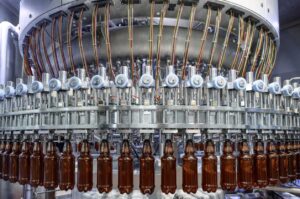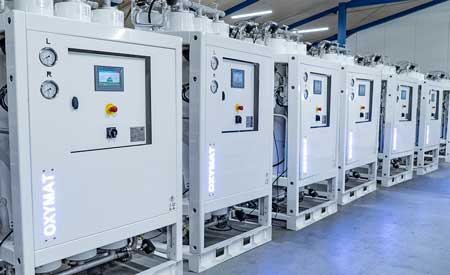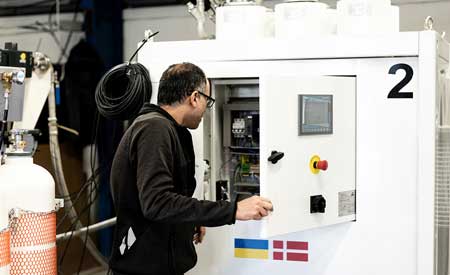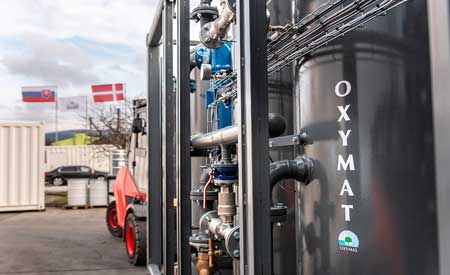The production of biogas has become more and more widespread. To reuse products such as animal manure, municipal waste, food waste, and other biproducts from various food processing industries has been established as a sustainable method of energy production. Biogas is typically produced at smaller decentralized plants where the biogas is either distributed into the natural gas grid or used directly onsite in a combined heat and power (CHP) gas engine.
During the past few years, OXYMAT has experienced an increased demand for onsite oxygen generation in various biogas plants. Oxygen is used in the biogas production process where the biogas will be burned directly in a CHP gas engine. Besides methane, the biogas is composed of carbon dioxide and hydrogen sulfide (H2S).
When the biogas is to be used in a CHP gas engine, hydrogen sulfide is an unwanted component in the biogas. Hydrogen sulfide is oxidized during combustion leading to the formation of acidic sulfur dioxide (SO2). Sulfur dioxide is a highly corrosive gas, and will lead to the deterioration of the gas engine and other components of the biogas plant. Because of this the hydrogen sulfide must be removed from the biogas before it enters the CHP gas engine.
A simple, yet effective method to remove hydrogen sulfide is to introduce gaseous oxygen into the biogas fermenter. The oxygen is injected into the space above the liquid in the fermenter, where the oxygen will react with the hydrogen sulfide. In this process, the hydrogen sulfide is oxidized into elemental sulfur by microorganisms that grow on the inside of the biogas fermenter:
2 H2S + O2 -> 2 S + 2 H2O
The sulfur is accumulated on these surfaces, where it eventually will reenter into the liquid biomass. Here it is partially converted into hydrogen sulfide as well as being flushed out with the degassed slurry.
Using an OXYMAT oxygen generator to produce the required amount of oxygen for the desulfurization process has proved to be a reliable and price worthy solution at many biogas plants. The consumption of oxygen in biogas plants typically begins at flow rates of 10 Nm3/hour and increasing. As the desulfurization process is insensitive to the gas purity, purities can
range from 93 to 95 % pure oxygen.
OXYMAT has delivered numerous PSA oxygen generators to biogas plants, primarily in Northern Europe. The PSA oxygen generators can be delivered as complete systems for installation in a building or, due to the compact design, they can be delivered as a small containerized plug and play system, allowing for easy installation without worrying about limited space.
FAQ
Oxygen is used in the biogas production process to remove hydrogen sulfide (H2S) from the biogas. H2S is an unwanted component in biogas, as it can lead to equipment corrosion and damage.
A simple and effective method to remove hydrogen sulfide is by introducing gaseous oxygen into the biogas fermenter. Oxygen reacts with hydrogen sulfide, leading to its oxidation into elemental sulfur by microorganisms.
The chemical reaction is as follows: 2 H2S + O2 -> 2 S + 2 H2O. This reaction converts hydrogen sulfide into elemental sulfur and water.
The sulfur accumulates on the surfaces inside the biogas fermenter and eventually reenters the liquid biomass. Some of it may be converted back into hydrogen sulfide and flushed out with the degassed slurry.
Onsite oxygen generation is preferred because it offers a reliable and cost-effective solution for providing the required amount of oxygen in biogas plants. It eliminates the need for external oxygen supplies and ensures a continuous oxygen source.
Oxygen consumption in biogas plants typically starts at flow rates of 10 Nm3/hour and increases as needed for the desulfurization process.
The desulfurization process is not highly sensitive to gas purity. Oxygen purities ranging from 93% to 95% pure oxygen are suitable for effective removal of hydrogen sulfide.

